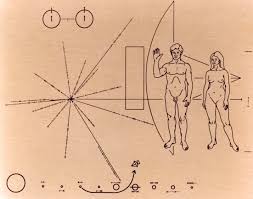November 26, 2017 – A group called METI (Messaging Extraterrestrial Intelligence) earlier this month sent a message over a three day period from a transmitter in Norway aimed at a red dwarf named GJ 273 or Luyten’s Star. What was in the message? Called the “Hello” message it begins with a series of radio pulses representing prime numbers up to 137. Along with the pulses the signallers have included 8-bit binary coded instructions to the potential intelligent listener who could then open the balance of the message containing 10-second digital audio files created by 33 musicians and sound artists.
Douglas Vakoch, President of METI describes the message as a “prototype” for future targeted messages aimed at other nearby stars with exoplanets. Based on the latest count these number in the thousands. Saying “Hello” and getting back a reply from one would be a moment in time humanity could live to regret or see our childhood’s end as an isolated intelligent species.
Unlike those in METI, Stephen Hawking believes contact with extraterrestrial intelligence could lead to disaster for our species. He uses the analogy of our own human history when more technically advanced societies made first contact with others on the planet. Europe’s discovery of America is a good example. The wave of destruction unleashed in the Americas decimated the indigenous peoples of both continents. States Hawking, “A civilization reading one of our messages could be billions of years ahead of us….and may not see us as any more valuable than we see bacteria.”
Luyten’s Star is 12.36 light years from our Solar System. So the message METI just sent will arrive there in more than 12 years, and any reply will take the same amount of time to get back to us. If in 25 years we hear back let’s hope Hawking is wrong.
After Luyten’s Star, METI plans to send similar messages to as many as one million targeted stars in coming years. All these messages will be sent using radio waves. Can we assume that an intelligent species will be using radio waves as a means of communicating? Quite frankly, with all the background radiowave interference coming from space, intelligent species may have long abandoned this medium for communication. They may be using ghostly neutrinos, or gravitational waves, or other communication technologies we have yet to think of? It is our anthropocentric assumptions that has us thinking that any intelligence will be doing exactly what we do, using the same technologies we do.
That’s poor science based on a sample of one, life here on Earth. We have no idea about the evolution of life elsewhere. Today we are excited about finding evidence of oceans beneath the icy crusts of moons and dwarf planets in the outer Solar System. Why? Because we have in our one sample where life emerged, evidence that without water, it likely wouldn’t have happened on Earth. So finding water elsewhere gets exobiologists excited about potential life? Meanwhile, we have in Saturn’s largest moon, Titan, a world that looks so much like ours with a thick atmosphere, oceans, rivers, erosion features, and other similarities, not based on water but rather liquid methane. Would we recognize living things from a world like Titan considering our built-in search bias?
A leading cosmologist in the United Kingdom, Sir Martin Rees, has pointed out that our anthropocentric view may make any exoplanet life almost invisible to us. He is quoted in an October 2013 article stating, “They could be staring us in the face and we just don’t recognize them.”
And why is that? Because we have made assumptions that an advanced civilization will have been built in the same way as ours with mathematics and technology.
Today our earliest detectable radio waves have reached more than 100 light-years away from Earth. Our television broadcasts are a mere 30 light-years behind. This is Earth’s technological communication bubble and so far no alien intelligence has bothered to tell us we know you are there. Maybe METI is wasting its time considering what’s already pulsing through interstellar space. But imagine an alien intelligence trying to understand episodes of “I Love Lucy” or “The Beverly Hillbillies.” I’m not sure they would deem us an intelligent species worth knowing.
When Carl Sagan conceived of the two records that accompanied the American spacecraft named Voyager 1 and 2, the messages contained within these gold discs provided greetings from Earth in many languages, pictures of life on our planet and of our human civilization, and a roadmap to find our Sun and its third planet. The Voyagers launched in 1977 represent humanity’s most significant technology export having both departed from the Solar System. Neither has yet to travel a light-year from our home planet and it is estimated it will be 40,000 years from now when it encounters a star designated AC +79 3888, and lying 17.6 light-years from our planet. A reply from an alien civilization finding this human-created artifact would arrive back here on Earth 40,017 years from today, give or take a few years. Would humanity be around to receive it?

Exobiologists seeking intelligent alien life have theorized why we may not be receiving signals from space. Here are a few of their hypotheses:
- The median age of exoplanets discovered in our galaxy so far is 1.8 billion years older than Earth. That means if intelligent life evolved on any exoplanets, it likely happened well before our existence and that we are out of synch with the rest of intelligence in the galaxy.
- That we are the first intelligent species in the galaxy to develop technology capable of sending signals into space, and therefore, there are no species as of yet capable of replying.
- That extraterrestrial life is far rarer than we think and, therefore, intelligent life rarer still making encountering it almost impossible mathematically speaking.
- That extraterrestrial intelligent life with a head start of more than a billion years would have evolved and created technologies so advanced we wouldn’t haven’t a hope of detecting them.
- Or that intelligent life that has evolved elsewhere has become extinct over the billions of years that represent the galaxy’s existence. What could possibly have happened to these intelligent civilizations? Maybe they had their atomic age and it ended badly. Or maybe they experienced runaway climate change. Or maybe their star went nova or died ending their existence.
So if I were METI, I wouldn’t hold my breath that 25 years from now someone at the other end of our sent message will have prepared and sent a reply.










or maybe these are communicating with us through the natural world around us.
Compassion is as much a universal language as math is. Could there be an ‘algorithm’ that exists within the harmony of nature’s connected ecosystem?
Compassion as an algorithm.
That is what TREO is exploring.
Please explain TREO.
The Rose of Education Organization, deciphering the language of compassion as a synthesis of acronyms, algorithms and linguistics